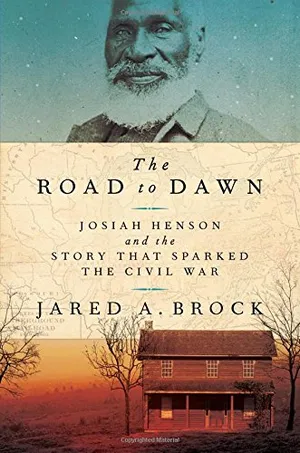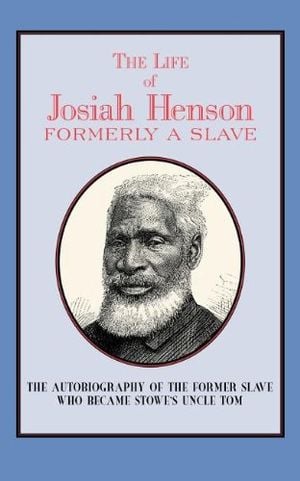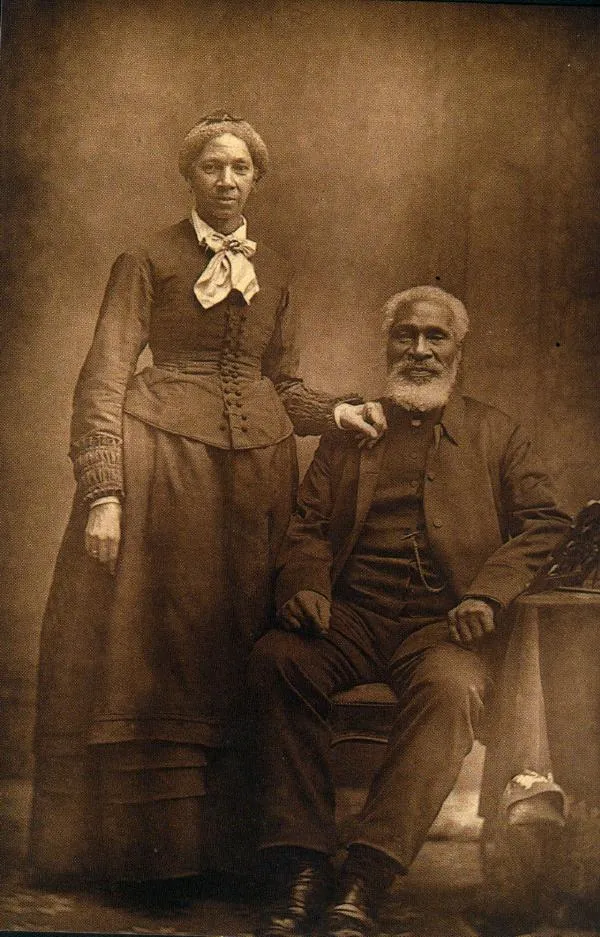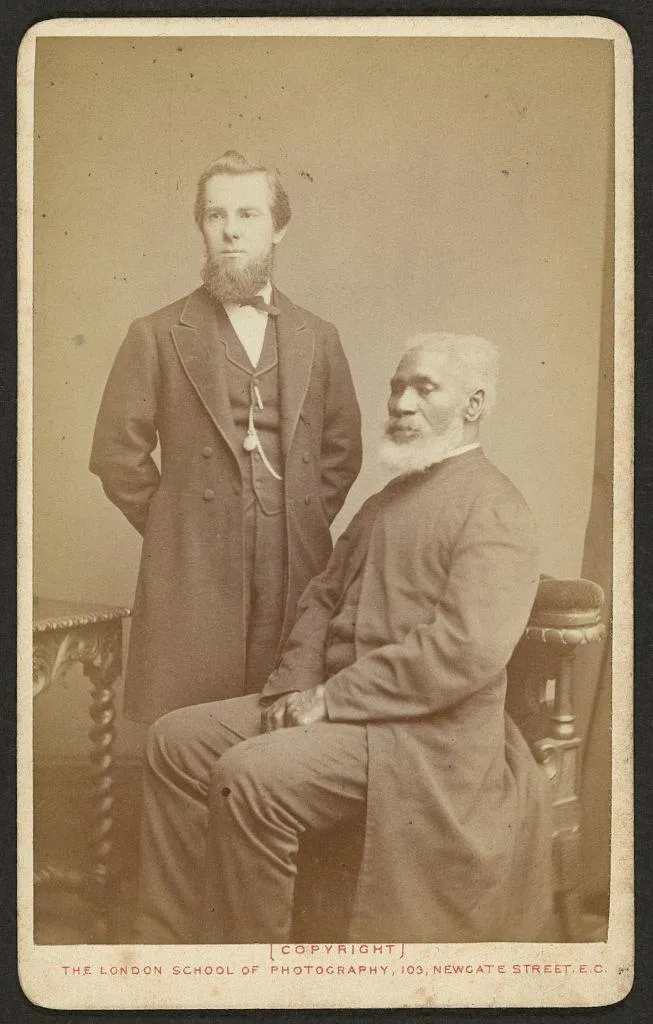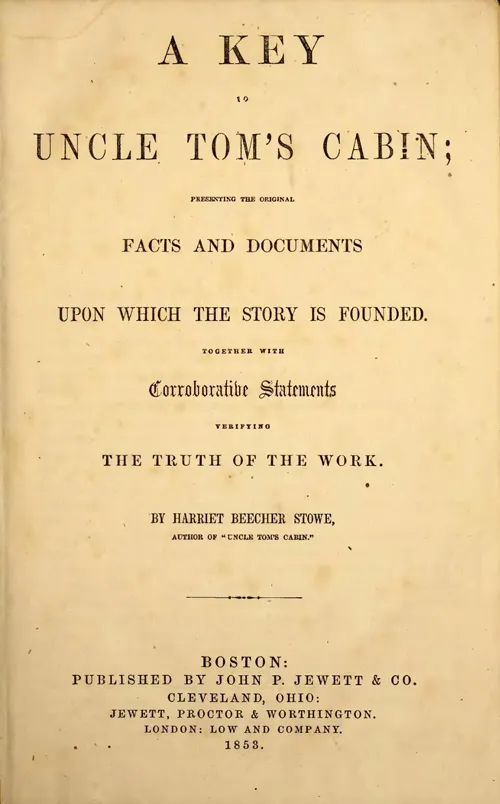The Story of Josiah Henson, the Real Inspiration for ‘Uncle Tom’s Cabin’
Before there was the novel by Harriet Beecher Stowe, a formerly enslaved African-American living in Canada wrote a memoir detailing his experience
/https://tf-cmsv2-smithsonianmag-media.s3.amazonaws.com/filer/db/25/db253fef-011a-4042-87ca-ec5dacee7f50/13-young-josiah-henson-2-wr.jpg)
From its very first moments in print on March 20, 1852, Harriet Beecher Stowe’s Uncle Tom’s Cabin was a smashing success. It sold 3,000 copies on its first day, and Frederick Douglass reported that 5,000 copies—the entire first print run—were purchased within four days. By May 3, the Boston Morning Post declared that “everybody has read it, is reading, or is about to read it.”
According to reports at the time, it took 17 printing presses running around the clock to keep up with demand. By the end of its first year in print, the book had sold over 300,000 copies in the United States alone, going on to become the best-selling novel of the 19th century.
In Canada, a former enslaved laborer and aging Methodist minister named Josiah Henson—whose life story bore uncanny resemblances to Stowe’s titular character—immediately understood its importance.
**********
The Road to Dawn: Josiah Henson and the Story That Sparked the Civil War
This sweeping biography immortalizes the man who was the inspiration for Harriet Beecher Stowe's Uncle Tom's Cabin in an epic tale of courage and bravery in the face of unimaginable trials.
Born near Port Tobacco, Maryland, around 1789, Henson’s first memory was of his father being whipped, having his ear cut off, and sold south—all as punishment for striking a white man who had attempted to rape his wife. He never saw his father again.
Henson was later separated from his mother and sold to a child trafficker, but soon fell deathly ill. The slave trader offered the boy to Henson’s mother’s owner, an alcoholic gambler named Isaac Riley, for a bargain: free of charge if the young Henson died, a barter of some horseshoeing work if he survived.
But he did recover, and Henson and his mother were enslaved about 12 miles from Washington, D.C., on Riley’s plantation. He endured countless beatings as a child—especially after an ill-fated attempt to learn to read.
Henson had great physical strength and leadership ability, and eventually became Riley’s market man in the nation’s capital. As the person in charge of selling all his master’s farm produce, he rubbed shoulders with eminent lawyers and businessmen and learned the skills of running a business.
Despite the fact that he wouldn't learn to read until much later in life, Henson also became a great preacher, memorizing verses and relying on his eloquence and natural sense of humor to connect with parishioners. A white minister convinced him to secretly raise money to purchase his own freedom while traveling between the Riley family’s farms. The minister arranged for churches to host Henson, and he raised $350 towards his emancipation, but Riley swindled him out of the money and tried to sell him south to New Orleans. Henson narrowly avoided that harsh fate through a highly providential twist of events: Riley’s nephew Amos, the young man tasked with selling Henson, contracted malaria. Rather than letting the son die, Henson loaded him on a steamship and returned north. In 1830, Henson ran away with his wife and two youngest children; they walked more than 600 miles to Canada.
Once in a new land, Henson helped start in 1841 a freeman settlement called the British American Institute, in an area called Dawn, which became known as one of the final stops on the Underground Railroad. Henson repeatedly returned to the U.S. to guide 118 other slaves to freedom. It was a massively dangerous undertaking, but Henson saw a greater purpose than simply living out his life in Ontario, Canada. In addition to his service to the school, Henson ran a farm, started a gristmill, bred horses, and built a sawmill for high-quality black lumber— so good, in fact, that it won him a medal at the first World's Fair in London ten years later.
Before the Civil War, Henson frequently traveled unhindered between Ontario and Boston, where he often preached. During one such trip, Henson befriended the abolitionist Samuel Atkins Eliot, a former mayor of Boston and state legislator; Eliot would later serve in the U.S. House of Representatives.
Impressed with Henson, Eliot offered to pen the story of his life as a memoir. That book, titled The Life of Josiah Henson, Formerly a Slave, Now an Inhabitant of Canada, as Narrated by Himself, was published in early 1849.
Life of Josiah Henson (Applewood Books)
The character Uncle Tom, fr om Harriet Beecher Stowe's bestselling novel, ""Uncle Tom's Cabin,"" is based on the life of Josiah Henson (1789-1882).
Henson’s book garnered attention at the abolitionist reading room in Boston as well as in like-minded households throughout the North. On one of his trips home from Boston, Henson took a detour to visit a woman who was about to write a book of her own. As a later edition of Henson’s memoir recalls:
“I was in the vicinity of Andover, Mass., in the year 1849, where Mrs. Harriet Beecher Stowe resided. She sent for me and my travelling companion, Mr. George Clark, a white gentleman, who had a fine voice for singing, and usually sang at my meetings to add to their interest. We went to Mrs. Stowe’s house, and she was deeply interested in the story of my life and misfortunes, and had me narrate its details to her. She said she was glad it had been published, and hoped it would be of great service, and would open the eyes of the people to the enormity of the crime of holding men in bondage. She manifested so much interest in me, that I told her about the peculiarities of many slaveholders, and the slaves in the region where I had lived for forty-two years. My experiences had been more varied than those of the majority of slaves...”
**********
In March 1851, Stowe wrote to Gamaliel Bailey, editor and publisher of The National Era, a Washington antislavery paper, and offered him the story she had been working on, which she thought would run for three or four installments. The plot, at its most basic, details the journeys of two enslaved laborers on the precipice of being sold off by their owner, a Kentucky farmer in arrears. One, named Harry, flees with his mother, Eliza, to the North, eventually ending up in Canada, while the other, Uncle Tom, is transported down the Mississippi River, where he is eventually sold to a vicious Louisiana plantation owner. Tom’s faith nearly falters, but a pair of visions places him back on firm ground. After encouraging two women to escape north, Tom is beaten to death when he refuses to reveal where they’ve gone; an attempt by Tom’s original owner to purchase Tom back arrives too late. Upon returning to Kentucky, the farmer’s son sets all of his late father’s enslaved free, encouraging them to remember Tom’s sacrifice whenever they see his cabin.
Uncle Tom’s Cabin debuted in the Era on June 5, 1851, and it ran in 41 weekly installments over the following ten months, and immediately grabbed the capital city’s attention. The paper’s subscriber base grew by 26 percent, and an estimated 50,000 people read Stowe’s story in serial form, spurring John P. Jewett and Company to publish it as a novel in two volumes of 312 pages each.
Henson wrote of the release: ““When this novel of Mrs. Stowe came out, it shook the foundations of this world… It shook the Americans out of their shoes and of their shirts. It left some of them on the sandbar barefooted and scratching their heads, so they came to the conclusion that the whole thing was a fabrication.”
Indeed, the backlash against the novel came rapidly and rabidly. Critics argued that Stowe’s writing was far too emotional to impact events in the real world. After all, it was a novel. It wasn’t based on facts, they said. And in any case, some said, she’d overlooked many of the “benefits” of slavery, including romantic love between an enslaved woman and her master.
Stowe wasn’t concerned about the politics. To her, an ardent abolitionist and daughter of a world-famous preacher, slavery was a religious and emotional challenge. Her goal, as stated in the first edition preface, was “to awaken sympathy and feeling for the African race.” On this point she certainly hit her mark, with many moderate antislavery advocates praising the book for putting a human face on slavery. If the Fugitive Slave Act of 1850 had been a tipping point, then Uncle Tom’s Cabin was a hard shove toward abolitionism.
Proslavery advocates saw the novel as sectarian propaganda. They insisted that slavery was sanctioned in the Bible, and that Stowe had fabricated an unrealistic, one-dimensional picture of slavery in the South. Pro-slavery newspapers were mocking and sarcastic in their reviews, which had titles like “More Anti-Slavery Fiction,” “A Few Facts for Mrs. Stowe,” and “Uncle Tom Mania.” Editors lamented that “Uncle Tom’s Cabin seems fated to be an ever-springing fountain of discord,” and “We tremble for the traditional chivalry of the South.”
Rather than letting the media and propagandist anti-Tom novels gain attention and discredit the truths behind her novel, Stowe decided to fight fire with fact. Her response to critics was another book, published in early 1853, called The Key to Uncle Tom’s Cabin: Presenting the Original Facts and Documents upon Which the Story Is Founded, Together with Corroborative Statements Verifying the Truth of the Work. A giant annotated bibliography of her sources, the book pointing to hundreds of documented cases of real-life incidents that were similar or identical to those portrayed in her story.
Stowe had named names. She had described the various people who had inspired the characters of Mr. Haley, George Harris, Eliza, Simon Legree, and the rest. One of those characters, of course, was of particular interest. Who was Uncle Tom?
Stowe wrote in The Key: “The character of Uncle Tom has been objected to as improbable; and yet the writer has received more confirmations of that character, and from a great variety of sources, than of any other in the book.” Stowe spends several pages describing the inspiration for various scenes in Uncle Tom’s story, and then she declares: “A last instance parallel with that of Uncle Tom is to be found in the published memoirs of the venerable Josiah Henson . . . now pastor of the missionary settlement at Dawn, in Canada.”
There were significant overlaps between the lives of Josiah Henson and Tom, and readers familiar with Henson’s story immediately saw them. Their real-life and fictional slave owners both separated a mother from her child while she begged him not to tear the family apart. Both Josiah and Tom lived on plantations in Kentucky. Legree constantly beat Tom, and Tom was sold to pay his owner’s debts before being sent to Louisiana, a fate Josiah just barely escaped. Both would cross the Ohio River in their daring escapes. Above all, it was Josiah’s faith in God in the face of hardship that fused him to Stowe’s hero, for both Tom and Josiah were strongly religious men.
The parallels were close enough for prominent African-Americans to take notice. On April 15, 1853, Martin Robison Delany, one of the first three black men admitted to Harvard Medical School, and the only black officer who received the rank of major during the Civil War, wrote a letter to Frederick Douglass in which he confirmed Stowe’s estimation of Josiah. He wrote, “It is now certain, that the Rev. JOSIAH HENSON, of Dawn, Canada West, is the real Uncle Tom, the Christian hero, in Mrs. Stowe’s far-famed book of ‘Uncle Tom’s Cabin.’”
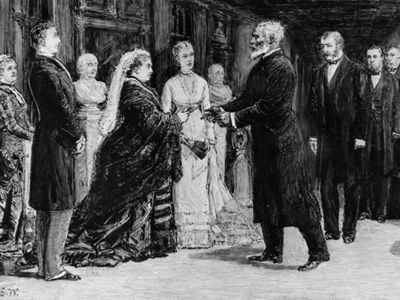
Delany suggested to Douglass that perhaps Stowe owed Josiah something more substantial than a citation in her book: “Since Mrs. Stowe and Messrs. Jewett & Co., Publishers, have realized so great an amount of money from the sale of a work founded upon this good old man, whose living testimony has to be brought to sustain this great book . . . would it be expecting too much to suggest, that they—the publishers—present Father Henson . . . but a portion of the profits? I do not know what you may think about it; but it strikes me that this would be but just and right.”
Not only would Henson—the real Uncle Tom—never receive a dime from Stowe’s publishers, history itself didn’t remember him kindly because of his connection to the fictional hero. After the publication of Stowe’s novel, theater owners adapted the story for the stage, producing “Tom shows,” better known as “minstrel shows” that inverted version the novel’s plot. Played by white men in blackface, Tom was a caricature, an old hunchback with poor English who would happily sell out his own race to curry favor with his owner. Even though the novel was the best-selling book of the century, considerably more people saw one of these racist performances than read the book. That perversion of the name “Uncle Tom,” has stuck ever since.
**********
Among all the readers of Stowe’s Key, there was one whose influence could not be overstated. According to the Library of Congress’s circulation records, President Abraham Lincoln borrowed The Key to Uncle Tom’s Cabin on June 16, 1862, and returned it 43 days later, on July 29. The dates correspond exactly to the time during which he drafted the Emancipation Proclamation. We may never know the degree to which Harriet Beecher Stowe influenced Abraham Lincoln himself. But it is clear that the northern writer used her celebrity platform to powerfully sway public opinion toward emancipation. And during the critical time when Lincoln was crafting the Emancipation Proclamation, he had Stowe’s Key–and Josiah Henson’s story— near at hand.
Which would be fitting as the original offering played a major role in Lincoln’s election. His Republican Party had distributed 100,000 copies of Uncle Tom’s Cabin during the presidential campaign of 1860 as a way to stir up abolitionist support. Without the abolitionist press and Stowe’s book, it’s possible that Lincoln would not have garnered enough support to be elected President. As Radical Republican leader and U.S. Senator Charles Sumner declared, “Had there been no Uncle Tom’s Cabin, there would have been no Lincoln in the White House.”
For his part, Henson used the publication of Stowe’s books to agitate for change in the United States. He re-published his memoir and used the funds to purchase his brother’s freedom. He supported black families whose husbands and fathers went off to fight in the Civil War. He ran businesses in Canada to employ black refugees. In 1876, at age 87, Henson did a 100-plus city speaking tour of the United Kingdom to relieve himself of debts shouldered on behalf of the work at Dawn, and Queen Victoria invited him to Windsor Castle. Sixteen years after the Civil War ended, Rutherford B. Hayes entertained him at the White House.
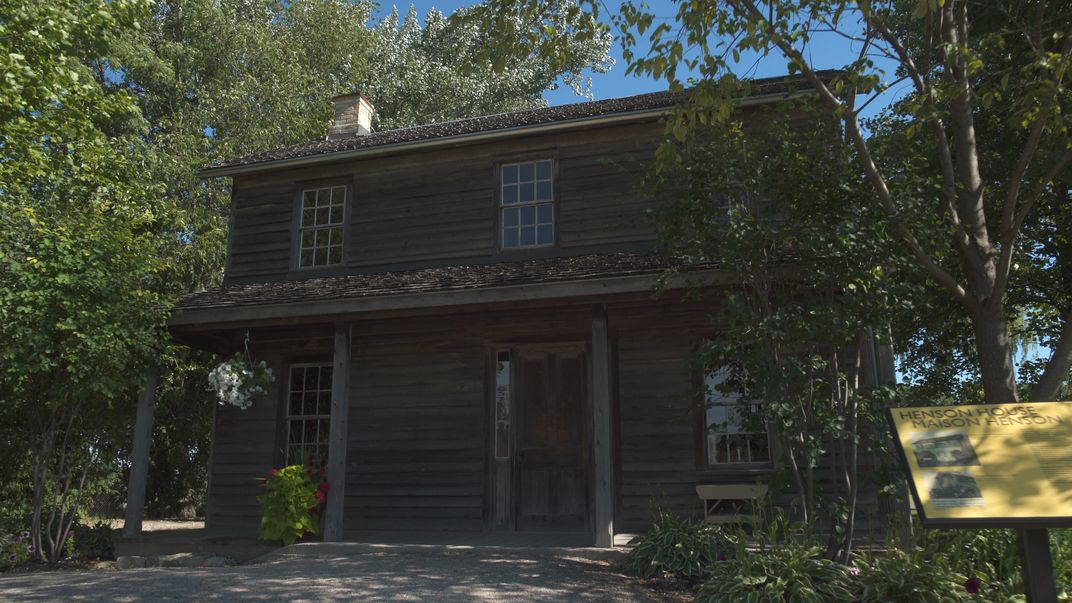
Henson died in Dresden, Ontario, in 1883 at the age of 93; the New York Times obituary included his literary connection in the first line.
His funeral was one of the largest in Dresden’s history. Bells rang from the churches, and most of the businesses closed for the service. Black musicians performed hymns, and 50 wagons followed his casket in a nearly two-mile procession to the graveside. Thousands of black and white attendees paid their respects.
Henson’s cabin in Dresden is now a small museum, and more than 200 of his descendants are still alive today. The village of Dresden is still home to hundreds of descendants of enslaved laborers, men and women who first settled in the area as fugitives in Josiah Henson’s time.
Though history has been unkind to Uncle Tom, there’s hope that his reputation as a martyr can be resuscitated as readers extricate him from the more negative connotations. Were he still alive today, one would hope Henson could still proudly repeat his words upon learning of his connection to the novel’s hero: “From that time to the present, I have been called ‘Uncle Tom,’ and I feel proud of the title. If my humble words in any way inspired that gifted lady to write… I have not lived in vain; for I believe that her book was the beginning of the glorious end.”
A Note to our Readers
Smithsonian magazine participates in affiliate link advertising programs. If you purchase an item through these links, we receive a commission.
